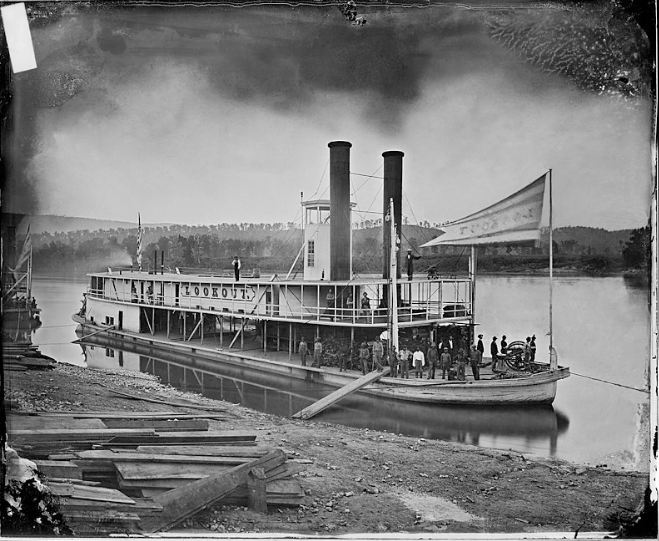We can never talk about the industrial revolution without ever mentioning steamboats. Indeed, steamboats and the industrial revolution are terms bound by the critical turn of events in the history of humanity. The creation of steam power and its application to water transport ushered the world to an era of massive cultural, economic, social, and technological improvements that forever defined humans’ way of living.
THE INDUSTRIAL REVOLUTION
The Industrial Revolution, whose exact dates are still highly debated, was a pivotal point in history. One can say that it is a quantum leap – from people using water as the primary power source to using steam to revolutionize every aspect of human living. With the improved version of the steam engine patented by Scotsman James Watt in 1769, the potential of steam technology to propel ships has piqued the interest of many inventors at the time. It subsequently led to revolutionizing transportation by land and water, hence the birth of steamboats.
Although steamboats were not generally ‘safe’ vessels to travel on due to the combustive properties of steam, they nevertheless made everything more convenient the moment they set sail on the rivers of Britain and the United States. Steamboats also made several contributions that altered how things were in the 1760s.
CONTRIBUTION OF STEAMBOATS TO THE INDUSTRIAL REVOLUTION
Steamboats have furthered the spread of the industrial revolution, which began in Britain circa the 1760s. While people used to harness water power to run factories and employ animals to transfer commodities back and forth, it all changed when the invention of steamboats. Steamboats made everything more efficient and time-saving than the usual way of things. The advent of steamboats affected the commercial, economic, industrial, and social aspects of everyday living.
Influence on Commerce
Steamboats paved the way for the expansion of trade and marketing. For instance, due to the efficiency and speed of steamboats, farmers were then able to sell surplus crops to distant locations without risking perishable goods. It led to economic growth because more income was generated as fewer crops go to waste.
With the enhanced trading capacity and expanded marketplace, people could also grow their businesses and sell their goods. Regional specialization in agriculture and manufacturing was also made possible through steamboats, as people can now traverse the waters that divide the regions with much ease and speed.
Influence on Economy
Time is of great value in the economy. The rise of steamboats significantly reduced travel time, especially in the transport of goods. Additionally, the introduction of steamboats as commercial transportation meant that people can now make business trips much faster and reduce the time spent on traveling. It allowed them to allocate extra time to other pertinent matters. Such that a journey that may have consumed days was dramatically cut to hours.
For example, when the father of steam navigation, Robert Fulton, launched the first commercial steamboat in 1807, it reduced travel from New York to Albany from an average of five days (via wind-powered vessels) to a squinting 32 hours (via steamboats). It was a massive improvement in the travel business, as people began to make trips more using the newcomer commercial steamboats.
Influence on Industry and Manufacture
Steamboats were an integral link in the supply and demand chain at the time. While steam power continues to revolutionize the machinery, hence improving productivity, the factories needed to overhaul old-fashioned machinery to accommodate steam technology. Steamboats played a crucial part in transporting the required equipment and tools to make the changes happen as soon as possible.
The application of steam technology allowed factories to relocate to more ideal locations, especially near the cities, harbors, and ports. The efficient, less-laborious manufacturing of goods and the strategic location of factories expanded the businesses, with steamboats helping traders deliver goods to more remote places.
Influence on the Society
Steamboats have dramatically altered people’s way of life on the grassroots level. The introduction of steam power, for example, allowed for a less-arduous job in factories, farms, and mines. Before the age of steam engines, people mostly rely on community and home-grown goods to survive the day. Self-sufficiency was the way of life back then.
The rise of steamboats that increased commercial trading opportunities decreased people’s self-sufficiency. People began to rely mostly on manufactured goods and imminently developed dependency upon commercialized products. The once self-sufficient people started to look at financial well-being as the new standard of living.
The expansion of commercial trading also impacted the farmers, who at that time are very well self-sufficient. With the growing market dictating the prices, farmers needed to up their game and swim through the market dynamics. This new gameplay in marketing robbed the farmers of their self-sufficiency, with the market influencing how they should produce their crops.
FINAL WORDS
Indeed, the invention of steamboats ushered the world to an age of global marketing and connection. Trade and travel would have never been this advanced and modernized if not for the invention of steam engines. Steamboats are historical machines — vessels carrying the humble beginnings of commercial trading, traveling, and industrial manufacturing that we know today.


